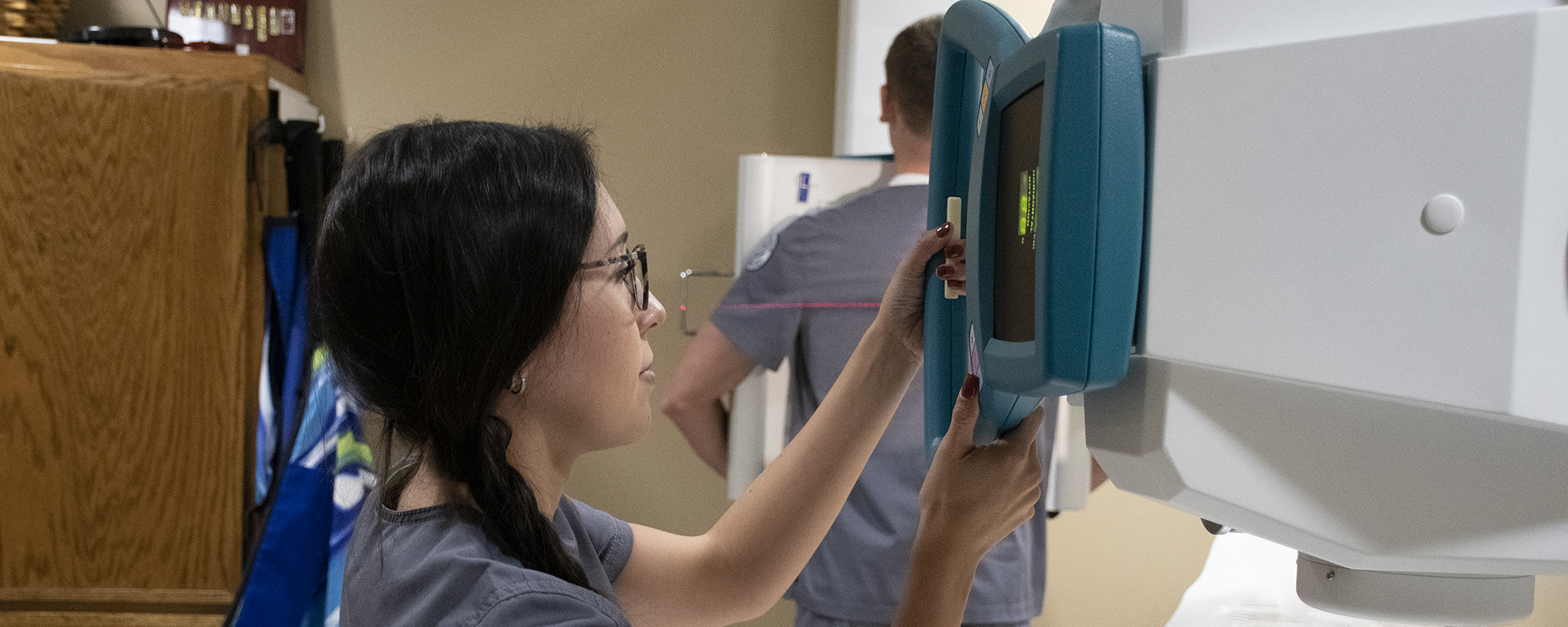The application deadline is March 1.
Radiologic technologists are critical to diagnosing a patient. It is their ability to capture images of the body that can lead to finding the source of an illness or injury. In this program, students are able to work with imaging equipment to take x-rays and even enhance their training with a mannequin with bones.
After only 21 months, students in this program will receive an associate of applied science degree and be eligible to take the American Registry of Radiologic Technologists Examination for Radiographers. This examination certifies the applicant as a Registered Technologist, RT (R), ARRT.
Prospective students must submit a North Arkansas College application as well as a radiologic technology program application by March 1. Only applicants who have completed or have in progress BIOL 2214, Anatomy & Physiology I and BIOL 2224, Anatomy & Physiology II will be considered. Students are required to maintain a minimum grade of “C” in each course required in the entire radiologic technology program curriculum. An overall GPA of 2.5 is required for admission into the program. A 2.0 GPA is required for graduation..
North Arkansas College Radiologic Technology program is an ARRT approved educational program and offers an Associate of Applied Science academic degree. Upon successful completion of the Northark Radiologic Technology program, graduates are immediately eligible to sit for their national board examination through the ARRT.
North Arkansas College Radiology Program is institutionally accredited by the Higher Learning Commission (HLC), which validates the quality of an institution's academic programs at all degree levels. As an academic program of Northark, the Radiologic Technology program is approved and recognized as an accredited educational program by the American Registry of Radiologic Technologists (ARRT). Immediately upon program completion, graduates are eligible for national board exams through the ARRT.
As part of the ARRT requirements for certification and registration, candidates must complete an ARRT verified and approved educational program and earn an academic degree (associate degree or higher) that is accredited by ARRT-Recognized Accreditation Agencies. North Arkansas Colleges Radiologic Technology program is an ARRT approved and verified educational program and offers an Associate of Applied Science academic degree, which meets these requirements.
* Immunizations and CPR training are not required before acceptance into the program.
Mission Statement
